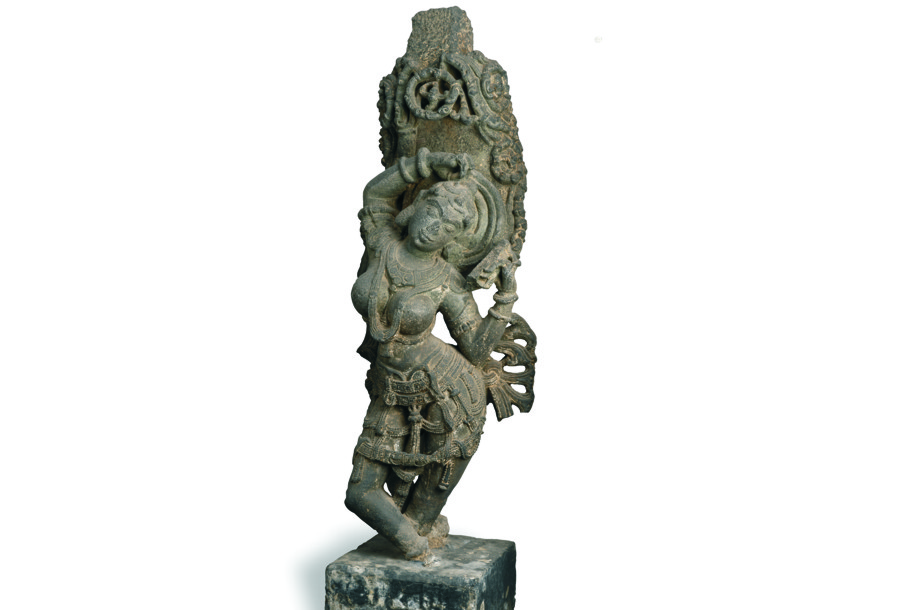Shalabhanjika
Description
The Shalabhanjika is a common decorative motif generously depicted in Indian stupa and temple architecture. Common to Hindu, Jain, and Buddhist architecture they are mainly designed as bracket figures.
They are often depicted as a well-adorned lady standing gracefully under a stylised tree or grasping the branch of a tree. She may also be shown engaged in different activities like dancing, playing a musical instrument, or adorning herself with cosmetics and jewellery. They are known as Madanikas, Surasundaris, or Devanganas in ancient and medieval Indian Shilpa texts. These celestial beauties were all-time favourites of Sanskrit and Prakrit poets and playwriters. Often their nayikas (heroines) were associated with these themes; for e.g., Rajasekhara's 'Viddhashalabhanjika' and 'Karpuramanjari'
They are symbols of fertility and nourishment which can be deduced upon observing the efforts taken to carve their hips and breasts. The Yakshi (tree nymph) sculptures may be considered a prototype for them.
Here, a well adorned young lady stands under stylised tree in full bloom. Her sharp features are finely delineated; particularly interesting are her arched eyebrows and firm yet delicate chin. Her nose must have been well shaped once. She is shown standing cross-legged, in tribhanga pose. Holding a mirror in her left hand she is adorning her hair with her right hand. She looks engrossed in her thoughts. What is she thinking? Well, that's left to your imagination!
Collection
Sculptures
Object Type
Sculpture
Material
Stone
Schools/Culture/Period
Early Medieval
Technique
--
Date
12th century CE
Location
--
Dimension
--
